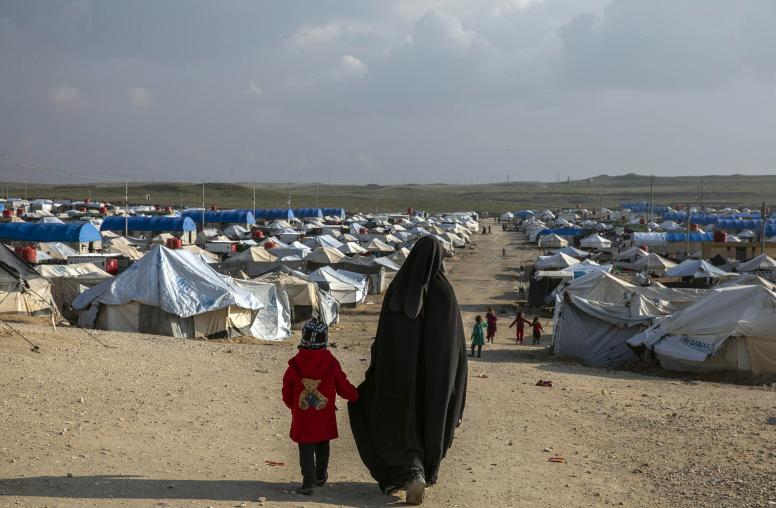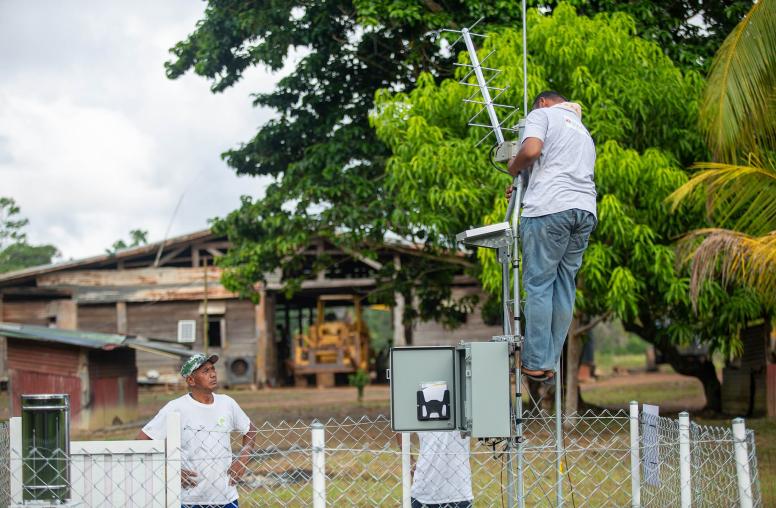Central Asia’s Growing Internet Carries New Risks of Violence
Amid a new ‘Great Game’ for influence, nations must choose how to govern their digital societies.
The “Great Game” has returned to Central Asia, but with a digital twist. Where once the British and Russian empires competed over lucrative trade routes and territorial influence, today the region is at the geopolitical and ideological confluence between competing visions of internet governance. China, Russia, Europe and the United States are all seeking to shape the region’s technology environment. What happens in Central Asia will have profound implications for the five countries of the region and the future of civic freedoms and digital rights more widely.

Central Asia’s digital transformation is accelerating. Governments in the region are racing to achieve the benefits of connecting their people and economies to the online world. At the same time, they are working to build national identities in states whose borders were drawn by the Soviet Union in a colonial attempt to establish its power by diluting the region’s ethnic, religious and national identities. The rapid turn to digital, then, is at least partly a Soviet inheritance: a belief in the redemptive power of technology and modernization to bolster the legitimacy of the state.
In the past decade, digital transformation has done more than spread internet access and mobile broadband throughout the region. It has also given rise to new political and social activism, including by violent extremist groups intent on toppling Central Asian governments. In the meantime, public authorities are walking a tightrope between the internet freedom that can boost prosperity and the digital authoritarianism that strengthens governments’ control.
Connectivity Spurs Opportunities—and Conflicts
With Central Asians flocking to social media, the explosion of online activities is exacerbating a web of conflicts that have ignited, or that risk, violence in the region. Authoritarian governments confront grassroots agitation for democratization, and conflicts are spurred by corruption and organized crime. Threats of violence arise, too, from a resurgence of nativism and nationalism, competition for access to water and other resources amid climate change, and conflicts that pit moderate and traditional visions of Islam against hardline, imported ideas.
The April border fight between Tajikistan and Kyrgyzstan, Central Asia’s worst since the Soviet Union’s collapse, dramatizes the new inflammatory power of social media. While the two governments quickly established a truce, nativist extremists and Russian media have continued to escalate a disinformation battle that now complicates any effort to calm the dispute. Across the range of Central Asia’s conflicts, opportunities and risks are emerging as politicians, regulators, entrepreneurs, criminals and ordinary citizens seek to define the boundaries and rules in the new digital environment.
New research from the digital risk consultancy SecDev shines a light on how the digital transition has enabled extremist groups to claim space within Central Asia's emerging cyber ecosystem. While violent extremist groups have a modest online footprint, they have proven surprisingly resilient at deflecting efforts of governments and social media platforms to drive them offline. They succeeded in part by amplifying topics that are actively discouraged by governments. In other words, they’ve tapped into deeper political and social undercurrents that transcend borders, giving their narratives credibility among mainstream audiences.
The issues raised by Central Asia’s extremist groups are diverse and popularly appealing. They include a discussion of the role of religion in society, conflicts such as those in Afghanistan and Syria, persecution of Muslims in France and Russia, and the treatment of Uyghurs in China. These groups are, to some extent, ring-fencing a host of conservative and populist issues in a way that mirrors tactics deployed by right-wing extremist groups in the United States and Europe. By engaging mainstream audiences in social media and embedding content in mainstream channels, they are spreading their message and deftly avoiding platform-led takedowns of their content and accounts.
No Easy Path
There is no easy path to minimizing online harms and destabilization in Central Asia. Police-led interventions and platform-led strategies designed to take down content and remove channels are unlikely to deter groups. Some extremist entities are actively experimenting with newer sites that are more difficult to track. Paradoxically, repressive laws and efforts to prohibit content are more likely to drive moderate opposition groups offline, leaving extremists and their extended networks with a greater voice in digital space. Instead, government measures may curb media independence, escalate indiscriminate surveillance and trigger antiterrorist operations, resulting in a chilling effect on human and civic rights.
Some Central Asian governments are struggling to achieve digital transformation without slipping into digital repression. They are doing this while also trying to accommodate six regional security, economic and political alliances — dominated variously by Russia, China or Europe — that influence the laws, governance and implied digital rights of their citizens. All of this has contributed to some contradictions in national policies and programs designed to address online extremism. For example, Central Asian governments are promoting progressive digital citizenship even as they adopt more stringent Russian-style laws to limit online activism. Chinese “smart city” surveillance is being rolled out as countries seek to adopt European-style laws on data privacy and data governance.
Ultimately, many of the digital challenges facing Central Asian societies are the same as those for countries worldwide. Digital transformation is defining the relationship between individuals and institutions. The boundaries among citizens, states and platforms are blurring. Defining a Magna Carta for the digital era will be a painful and protracted process. Governments will continue to struggle with pursuing the myriad benefits of the digital economy while seeking to minimize the loss of sovereignty and social disruption. This won’t be easy and will lead to unpredictable outcomes.
So what is to be done?
For most Central Asian states, digital literacy is certainly the most urgent path to ensure that populations are aware of the opportunities and risks of the new digital world. That means teaching fundamental skills to determine when interactions in cyberspace are being algorithmically shaped or influenced, and discriminating between fact and fiction. This requires empowering gatekeepers such as parents, teachers and scholars to coach the new online generation — most of whom are under 25. It also requires opening up online and offline dialogue about difficult subjects, including the roles of religion and ethnic identity so as not to leave the explaining to extremist groups.
A Public Health Approach
For technology platforms, the United Nations and countries committed to democracy and rule of law, it means encouraging Central Asian governments to adopt a public health approach to minimizing online harms such as the radicalization of youth. This approach requires societies to conduct ongoing diagnosis of online harms, identify risks and take steps to minimize them and reinforce protective factors. Governments and platforms must base their interventions in evidence and measure their outcomes. A public health approach can help societies deal with obvious digital harms such as violent extremism, along with others such as child exploitation and trafficking or gender-based violence. It offers a means of developing data-driven interventions to reduce the harms while avoiding the chilling effects of surveillance and repression.
The success of digital harm reduction measures is far from certain. There will be positive and negative experiences, and lessons must be learned. As digitalization accelerates and new digital natives come online, this is likely to inflame underlying ethnic tensions and other socio-economic grievances across the region. The status quo, however, is not an option. Central Asian governments will need to minimize online harms while also navigating a long-overdue re-examination of their Soviet past. They must do all this while also managing their relationships with two digital superpower neighbors. While uncertainties abound, one thing is clear: Central Asia's fortunes will be determined significantly by how the region addresses these central dilemmas of a new digital great game.
Rafal Rohozinski and Robert Muggah are principals at SecDev, a Canada-based consulting firm specializing in the intersections of cybersecurity and geopolitical threats.



